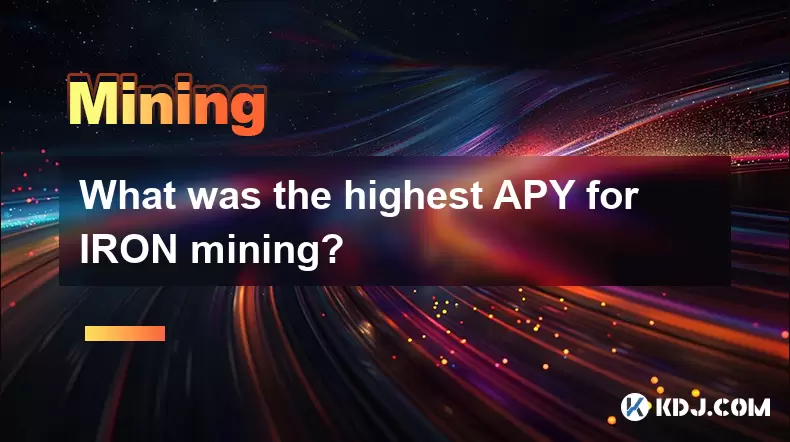-
 Bitcoin
Bitcoin $118900
1.66% -
 Ethereum
Ethereum $3735
1.35% -
 XRP
XRP $3.506
0.71% -
 Tether USDt
Tether USDt $1.000
-0.01% -
 BNB
BNB $799.4
5.78% -
 Solana
Solana $202.0
1.87% -
 USDC
USDC $0.9999
0.00% -
 Dogecoin
Dogecoin $0.2661
1.89% -
 Cardano
Cardano $0.8877
1.59% -
 TRON
TRON $0.3173
2.45% -
 Hyperliquid
Hyperliquid $45.00
2.59% -
 Stellar
Stellar $0.4723
3.40% -
 Sui
Sui $3.970
1.32% -
 Chainlink
Chainlink $19.67
1.94% -
 Hedera
Hedera $0.2710
1.99% -
 Avalanche
Avalanche $25.74
-0.01% -
 Bitcoin Cash
Bitcoin Cash $528.1
1.98% -
 Litecoin
Litecoin $120.1
3.57% -
 Shiba Inu
Shiba Inu $0.00001525
1.26% -
 UNUS SED LEO
UNUS SED LEO $8.989
-0.01% -
 Toncoin
Toncoin $3.304
1.74% -
 Polkadot
Polkadot $4.531
3.38% -
 Uniswap
Uniswap $10.74
2.51% -
 Ethena USDe
Ethena USDe $1.001
0.00% -
 Monero
Monero $325.5
2.44% -
 Pepe
Pepe $0.00001413
1.31% -
 Bitget Token
Bitget Token $4.860
0.85% -
 Dai
Dai $0.9999
0.01% -
 Aave
Aave $307.3
-2.07% -
 Bittensor
Bittensor $448.8
2.91%
What is a full node in Bitcoin?
Running a Bitcoin full node lets you independently verify transactions, enhances privacy, supports network decentralization, and doesn't require trust in third parties.
Jul 23, 2025 at 11:49 am

Understanding the Role of a Full Node in Bitcoin
A full node in the Bitcoin network is a computer or server that downloads and verifies the entire Bitcoin blockchain from the genesis block to the most recent block. Unlike lightweight or "SPV" (Simplified Payment Verification) nodes, a full node does not rely on third-party services to validate transactions. Instead, it independently enforces all the rules of the Bitcoin protocol, including consensus rules such as block size limits, difficulty adjustments, and digital signature validation. This means that every transaction and block processed by a full node is checked against the complete history of Bitcoin, ensuring that no invalid data is accepted.
The significance of a full node lies in its ability to enforce consensus rules without trust. When a user runs a full node, they do not need to trust miners, exchanges, or wallet providers to tell them what the valid state of the blockchain is. The node itself verifies every aspect of the network’s history. This is crucial for maintaining decentralization and security, as it reduces reliance on centralized entities and prevents the possibility of accepting fraudulent transactions.
How a Full Node Validates Transactions and Blocks
When a new transaction is broadcast to the Bitcoin network, full nodes perform several checks before accepting it into their local mempool (memory pool). These checks include:
- Verifying digital signatures to ensure the sender owns the bitcoins being spent.
- Confirming that the inputs referenced in the transaction exist and have not already been spent (preventing double-spending).
- Ensuring the transaction adheres to script rules, such as valid locking and unlocking scripts.
- Checking that the transaction size and format comply with network standards.
Once a miner includes transactions in a new block, full nodes validate the entire block. This includes:
- Confirming the block header hashes to the correct proof-of-work target.
- Validating every transaction within the block using the same rules as above.
- Ensuring the block size does not exceed the 1MB limit (or equivalent under SegWit rules).
- Checking that the coinbase transaction (the miner’s reward) does not exceed the allowed block subsidy plus fees.
If any part of the block fails validation, the full node rejects it, even if the majority of the network appears to accept it. This strict validation is what makes Bitcoin resistant to rule changes and centralization.
Setting Up a Bitcoin Full Node: Step-by-Step Guide
Running a full node requires specific hardware, software, and network setup. Here is how to do it:
- Download Bitcoin Core from the official website (https://bitcoin.org/en/download). This is the most widely used full node implementation.
- Install the software on a computer with sufficient storage, memory, and bandwidth. At least 350GB of free disk space is recommended, as the blockchain grows over time.
- Launch Bitcoin Core and allow it to begin downloading the blockchain. This process, known as initial block download (IBD), can take several days depending on internet speed and hardware.
- Configure settings if needed. For example, enable pruning if storage is limited. This allows the node to delete old blocks while still validating new ones.
- Open port 8333 on your router to allow incoming connections. This helps the node contribute more effectively to network propagation.
- Keep the node running continuously to maintain synchronization with the network.
Once synchronized, the node will independently validate all new blocks and transactions, and can be used to broadcast your own transactions without relying on third parties.
Benefits of Running a Full Node
Running a full node offers several advantages beyond personal validation. One of the most important is financial sovereignty. By using your own node, you eliminate the need to trust third-party services when checking your balance or transaction status. Wallets connected to your node, such as Electrum Personal Server or Sparrow Wallet, can query your node directly, ensuring you are not being misled by a malicious service.
Another benefit is supporting network health. Each full node increases the redundancy and resilience of the Bitcoin network. More nodes mean greater resistance to censorship, as no single entity can control information flow. Full nodes also prevent miners from introducing invalid blocks, acting as a check on their power.
Additionally, full nodes can serve as a private transaction relay. Instead of broadcasting transactions through public servers, you can send them directly from your node, reducing metadata exposure and enhancing privacy.
Common Misconceptions About Full Nodes
Some people believe that running a full node allows them to mine Bitcoin profitably, but this is not true. Full nodes do not participate in mining unless specifically configured with mining software and hardware. They only validate blocks created by miners.
Another misconception is that full nodes earn Bitcoin rewards. Unlike miners or staking nodes in other blockchains, full nodes do not receive block rewards or transaction fees. Their role is purely validation and propagation.
Some also think that running a full node requires expensive enterprise hardware. While high-end systems can speed up synchronization, a standard desktop or laptop with sufficient storage and a stable internet connection is adequate for most users.
Frequently Asked Questions
Can I run a full node on a Raspberry Pi?
Yes, it is possible to run a Bitcoin full node on a Raspberry Pi, especially models 4 or 5 with at least 4GB of RAM and an external SSD. You will need to use lightweight operating systems like RaspiOS and configure pruning to manage storage. Projects like RaspiBolt provide detailed guides for setting this up.
Does running a full node consume a lot of bandwidth?
A full node typically uses between 100GB and 500GB of data per month, depending on how many peers it connects to and whether it relays transactions. Users with data caps should monitor usage or configure the node to limit outbound connections using the -maxuploadtarget parameter.
Can I use my full node with any wallet?
Yes, many wallets support connection to a user-run full node. Examples include Sparrow Wallet, Electrum (with Electrum Personal Server), and Bitcoin Core’s built-in wallet. This setup allows the wallet to query blockchain data directly from your node, enhancing privacy and security.
What happens if my full node goes offline?
If your node disconnects, it will fall behind the latest block height. When it reconnects, it will download and validate any missed blocks. No data is lost, and the node will catch up automatically. However, during downtime, it cannot validate new transactions or relay them to the network.
Disclaimer:info@kdj.com
The information provided is not trading advice. kdj.com does not assume any responsibility for any investments made based on the information provided in this article. Cryptocurrencies are highly volatile and it is highly recommended that you invest with caution after thorough research!
If you believe that the content used on this website infringes your copyright, please contact us immediately (info@kdj.com) and we will delete it promptly.
- Binance, Leverage, and Perpetual Contracts: A Trader's Deep Dive
- 2025-07-23 16:50:12
- Cardano, Hoskinson, and the ADA Rally: What's Driving the Surge?
- 2025-07-23 17:30:13
- Bitcoin Profit-Taking, Whale Behavior, and Technical Analysis: A July 2025 Snapshot
- 2025-07-23 17:30:13
- Tom Lee's Bold Bitcoin Prediction: $250K by '25 or $3M Long Term?
- 2025-07-23 16:30:12
- VeChain (VET) Price Prediction: Bullish Breakout or Short-Term Skepticism?
- 2025-07-23 16:50:12
- Jackbit Casino: Your Ticket to Crypto Bonuses and Free Spins in 2025
- 2025-07-23 16:30:12
Related knowledge

What was the highest APY for IRON mining?
Jul 23,2025 at 05:14am
Understanding IRON Token and Its Mining MechanismThe IRON token is a stablecoin that operates within the Iron Finance ecosystem, primarily on blockcha...

What is impermanent loss in IRON pools?
Jul 23,2025 at 09:00am
Understanding Impermanent Loss in the Context of IRON PoolsImpermanent loss is a phenomenon that affects liquidity providers in decentralized finance ...

How to claim rewards from IRON mining?
Jul 23,2025 at 02:21pm
Understanding IRON Mining and Reward MechanismsIRON Finance operated as a decentralized finance (DeFi) protocol on the Polygon and Binance Smart Chain...

How to calculate KAS mining return on investment (ROI)?
Jul 23,2025 at 10:14am
Understanding KAS Mining and ROI BasicsCalculating the return on investment (ROI) for KAS (Kaspa) mining requires a clear understanding of both the mi...

How to join a Kaspa mining pool?
Jul 23,2025 at 08:36am
Understanding Kaspa and Its Mining MechanismKaspa is a high-performance blockchain that utilizes a unique blockDAG (Directed Acyclic Graph) structure,...

What happens when all Kaspa is mined?
Jul 23,2025 at 05:57pm
Understanding the Kaspa Mining MechanismKaspa operates on a blockchain protocol that utilizes the GHOSTDAG consensus mechanism, enabling high-speed bl...

What was the highest APY for IRON mining?
Jul 23,2025 at 05:14am
Understanding IRON Token and Its Mining MechanismThe IRON token is a stablecoin that operates within the Iron Finance ecosystem, primarily on blockcha...

What is impermanent loss in IRON pools?
Jul 23,2025 at 09:00am
Understanding Impermanent Loss in the Context of IRON PoolsImpermanent loss is a phenomenon that affects liquidity providers in decentralized finance ...

How to claim rewards from IRON mining?
Jul 23,2025 at 02:21pm
Understanding IRON Mining and Reward MechanismsIRON Finance operated as a decentralized finance (DeFi) protocol on the Polygon and Binance Smart Chain...

How to calculate KAS mining return on investment (ROI)?
Jul 23,2025 at 10:14am
Understanding KAS Mining and ROI BasicsCalculating the return on investment (ROI) for KAS (Kaspa) mining requires a clear understanding of both the mi...

How to join a Kaspa mining pool?
Jul 23,2025 at 08:36am
Understanding Kaspa and Its Mining MechanismKaspa is a high-performance blockchain that utilizes a unique blockDAG (Directed Acyclic Graph) structure,...

What happens when all Kaspa is mined?
Jul 23,2025 at 05:57pm
Understanding the Kaspa Mining MechanismKaspa operates on a blockchain protocol that utilizes the GHOSTDAG consensus mechanism, enabling high-speed bl...
See all articles

























































































